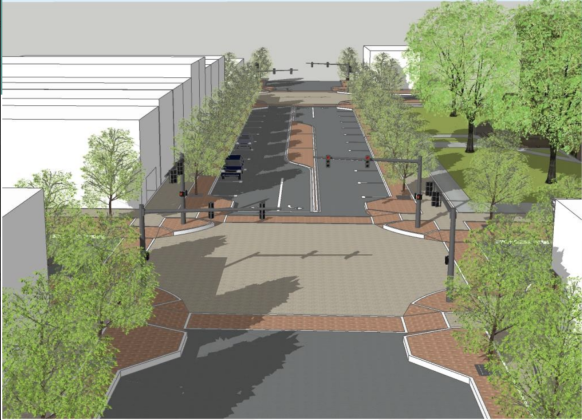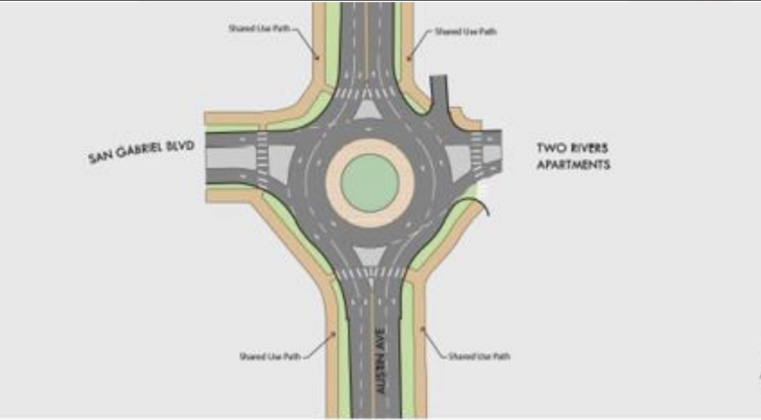At their November 28 meeting, Georgetown City Council heard an update on the Austin Avenue Corridor Study, which considers transportation needs to develop a vision and recommendations for areas between the Southeast Inner Loop and Northeast Inner Loop.
Since the last update the council received there has been future conditions modeling and build scenario modeling.
“I think we could do something really amazing if we could fix some of those right of way and access issues down [by Old Monument Cafe] and open up a whole new section of Austin Avenue to development,” Georgetown Mayor Josh Schroeder said.
For the Northern Gateway, one of the proposed concepts includes adding a traffic signal at the intersections of Chamber Way and Austin Avenue.
“We are also looking at what we can do to enhance pedestrian safety at Chamber Way. Transportation is looking at possibly putting a signal at this location, you know, can we put a hybrid beacon,” Lua Saluone, transportation manager for the city said.
Intersection ideas for San Gabriel Boulevard include adding northbound and southbound dedicated left-turn lanes and or creating a two-lane roundabout at the intersection.
Mr. Saluone said the proposed roundabout could serve as a place maker as residents and visitors make their way downtown.
Propositions for downtown included three concepts. The first one reduced the road to two lanes with a landscaped median/turn lane, parallel parking and dedicated amenities zones next to the sidewalk.
The second concept includes the amenities zones and two lanes with traffic driving in opposite directions. The third concept included two lanes of traffic driving in opposite directions, a landscape median/turn lane with diagonal parking on one side of the street.
Council member Mike Triggs, District 3, said getting rid of the parking could get rid of some downtown traffic.
“We think those are minimal numbers of spaces..but I think a lot of people view that those are prime parking spaces,” he said. “They’ll go downtown, and if they can’t park there, which is more the reality, they’ll park at the library, but they still come downtown hoping to get those good spaces. But they said if parking at the library is the best thing they can do, they may not come downtown anymore, so I think we should take that into consideration.”
Ideas for the intersection of Austin Avenue and University Avenue include either reduced lanes, dedicated left-turn lanes and easier right turns or just dedicated left-turn lanes and easier right-turns.
A proposed idea for Old Town showed reducing the amount of lanes to one lane in each direction with a landscape median/turn lane.
“Old Town was probably the most 50/50 in how they felt about lane reduction,” Mr. Saluone said.
For the Southern Gateway, the transportation department proposed at the intersection of Austin Avenue and Brushy Street to close access from Austin Avenue to Brushy Street by getting rid of the Brush Street connection between 19th and 20th Streets.
Mr. Saluone said by coming through with this concept, the site could be made more attractive to developers.
Finally, the intersection concepts for Leander Road proposed either dedicated left-turn lanes or dedicated left-turn lanes and channelized right-turn lanes.
In a survey the Transportation Department gave to residents, when asked “What transportation changes do you think would improve driving conditions along Austin Avenue?,” the two most popular responses were to reduce roadway turning conflicts and reduce congestion and delays at intersections



